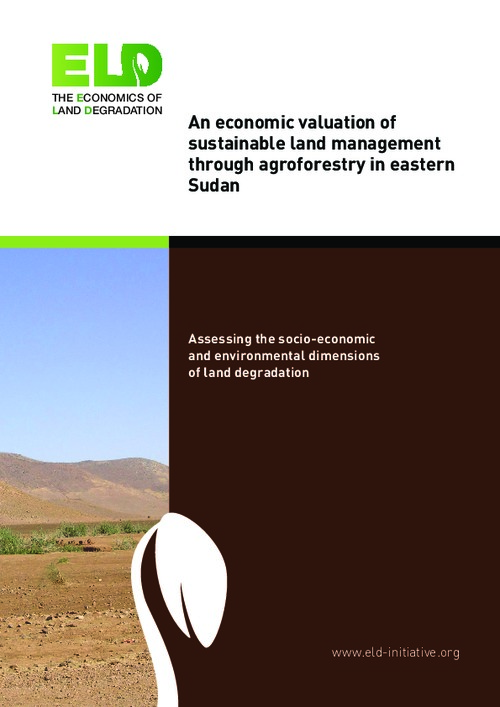Resource information
Gedaref State was previously known as the
food basket of Sudan. Over several decades
unsustainable agricultural practices that
combined near-monocropping with low nutrient
replenishment have led to significant degradation
of soils, which are no longer able to sustain farmer
livelihoods. This study found that adopting
an integrated sustainable land use and forest
restoration scenario could reverse the current
land degradation trend. The integration of Acacia
senegal with sorghum, Sudan’s primary staple
crop, was evaluated as a potential sustainable land
management practice. A. senegal is a high quality
gum arabic producing tree species, traditionally
integrated into a crop and fallow system. It has soil
nitrogen enhancing properties and international
demand for its gum, make it a promising species
to integrate in agricultural systems for both
environmental and economic health. In parallel,
consideration was also given to reforesting hills
that have bare and exposed soil, with Luban
gum trees such as Boswellia catering, Boswellia
frererana, and Boswellia papyrifera. Currently these
hills are not used for productive gains and have
no competing land use, thus their reforestation
would incur little to no opportunity costs.
The valuation of both proposed integrated
sustainable land management and forest
restoration scenarios were undertaken using
an ex-ante cost benefit analysis. An assessment
of the ecosystem services and economic
impact of restoration scenarios was carried out
Executive summary
using valuation techniques which included a
productivity change approach, and replacement
and avoided damage cost approaches. The
analysis built on high-resolution remote sensing,
GIS, and biophysical soil and water assessment
tools, allowing for rigourous estimates of the
impact of land use change on agricultural yields,
groundwater infiltration, water runoff, and carbon
sequestration.
The results showed that the net present value
returns to society as well as to the individual
farmer of intercropping A. senegal trees with
sorghum crops is significantly higher than that
of continuing pure sorghum cultivation over a 25
year time horizon – the length of the productive
life of A. senegal. At the farmer level, benefits of
using an intercropping system outweigh the
investment and management costs between three
to four years after their establishment. However,
favourable estimates of the financial returns from
gum arabic offer no guarantee that the farmer
will undertake gum production (Barbier 2000).
This decision will depend on what returns can be
obtained from other crops and the time profile
of these returns, as argued in Barbier (1992).
Thus, there are a number of fundamental policy
initiatives necessary to encourage farmers to
transition towards integrating A. senegal as part of
a sustainable land management system, including
security of tenure and access to credit, as well as
maintenance of the actual producer price for gum
arabic in the long term.


